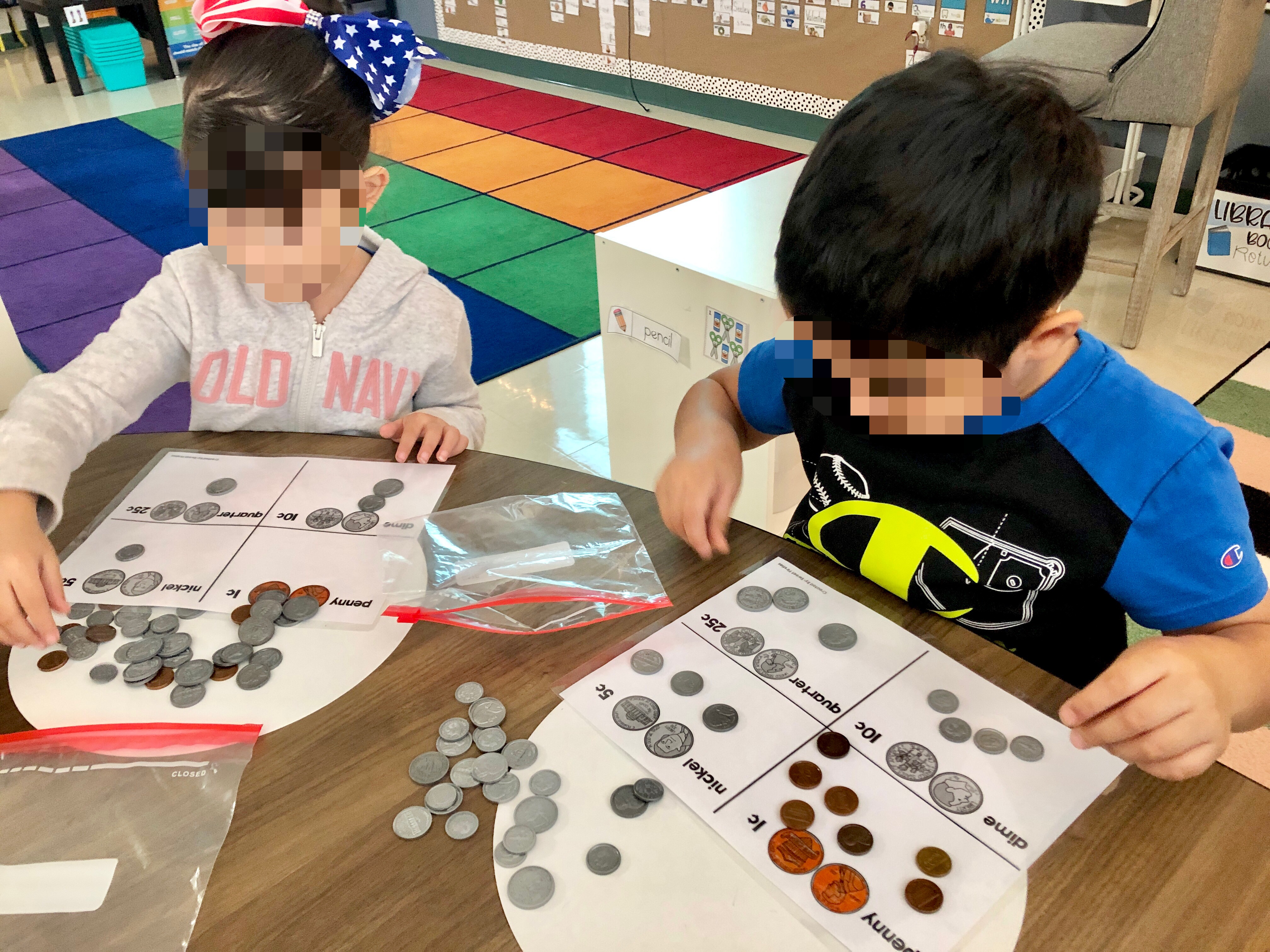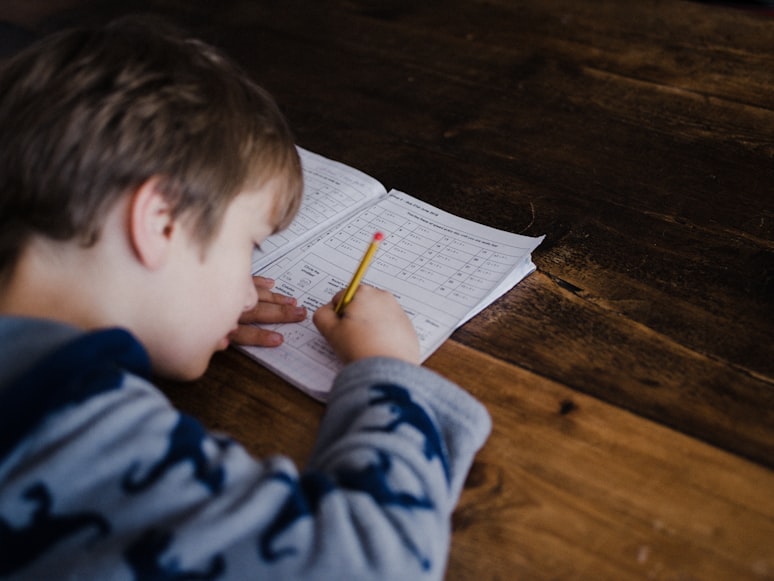September 17, 2022
All About the Money - US Coins
In kindergarten this week we've been focusing on U.S. coins! Students spent time exploring the penny, nickel, dime, and quarter. We discussed the characteristics of each as well as matched the value to each coin. We also enjoyed hands on activities, incorporated technology with Seesaw, and practiced working in our math workbooks!
M.A.T.H. Workshop
This year, I wanted to change up the framework to my math block time. I'm trying out the M.A.T.H. workshop approach created by Laura Santos from her blog Core Inspiration. I love that each letter of the word MATH represents a center during rotations (keeps it super simple for my kinders):
M- meet with teacher (teacher small groups)
A- at your seat (review or independent worksheet)
T- technology (Seesaw or other app)
H- hands on (centers activities)
It's my first time with this new approach to our math block, but so far I'm really enjoying it. We're still in the beginning stages where we're spending a lot of time with whole group practice of each type of center. So, this week we were focusing on the technology piece; utilizing Seesaw and practicing how to use the tools to complete the assignments.
At Your Seat
Technology: Seesaw
Hands On
Supplemental Resources
 |
September 11, 2022
Preparing for a Substitute
It was the first week of school and those back-to-school-germs were no joke. Typically I feel pretty good, maybe a sniffle here and there, but I was so surprised to feel feverish within the first couple of days! Definitely a career first! By the third day of school I was in need of a sub because I couldn't get my fever to go away. Thank goodness a sub picked up my posting (our district is low on subs as I'm sure all districts are), but it was a mad dash at 5am to make sure I had everything she may need for the day.
One thing I made sure to add to my classroom was an Emergency Sub Tub - as many teachers do. Previously I spent a lot of time having to write out plans and prep all the things, but many times I need a sub it's because of an unexpected illness or circumstance. This means little time to actually prep anything and therefore a lot of the effort gets put on my team. I don't like how unfair this can be, so I've made the switch to a Sub Tub.
The Emergency Sub Tub
Sub Activities
Freebie Sub Plan Resources
- Free NO PREP Sub Plans via The Kinder Life
- Kindergarten Sub Plans Freebie via Kreative in Kinder
- Back to School Freebie Coloring Pages via Rainbow Sprinkle Studio
- Fall & Halloween Coloring Pages via Learning with the Owl
- Growth Mindset Posters via Proud to be Primary
- Alphabet Coloring Pages via Rainbow Sprinkle Studio
Paid Sub Plan Resources
- Sub Plan BUNDLE for Kinder via Natalie Lynn Kindergarten
- Sub Plans for SpecEd via Especially Education
- Kindergarten Sub Plans via Create-Abilities
Be ready with a split-list
September 3, 2022
The First 2 Weeks - A Round Up
We're here! The kindergarten year has begun and looking back over the course of these two weeks I'm so proud of the work we've begun doing! I have to admit, those first few days were among the most exhausting - from the back to school germs (even knocking me out and needing a sub on day 3!) to training my little kinders to attend to a lesson for longer than 3 minutes...it was a doozy for sure.
However, we kept at it with community building lessons, lots of discussions about being kind kindergartners, and establishing those ever important routines and procedures. Now, as we're heading into week 3 after the Labor Day weekend I'm confident we can achieve even more in our days together. My class are such rockstars!
So, what were we up to these last couple of weeks? Let's take a peek!
Handwriting & Fine Motor
Oral Language Storytelling
Basic Math Concepts & Review
Dramatic Play/Purposeful Play
I love that my district really values the importance of play as a part of the kindergarten curriculum. We have a designated time (almost 40-50 mins a day!) dedicated to play and this is where you see a lot of really great things happening. From the oral language development to learning to problem solve on their own, students really have an opportunity to utilize all that they're learning in this play time.
August 2, 2022
The Year-Long Math Journal - TEKS Aligned!
Interactive Notebooks
Scope & Sequence
- Unit 1: I Am a Mathematician (first 20 days)
- AB/AABB Patterns
- Identifying Basic Shapes
- Rote Counting to 10
- Number Sense to 5
- Ordinal Numbers to 5
- Identify & Name Coins
- Unit 2: 2D Plane Shapes (10 Days)
- Unit 3: Number Sense to 5 (15 Days)
- Read, write, and represent numbers
- Comparing sets using >,<, and =
- 1 more/ 1 less
- Compose/decomose to 5
- Word problems to 5
- Unit 4: Number Sense to 10 (27 Days)
- Unit 5: Data Analysis to 10 (7 Days)
- Unit 6: Number Sense to 20 (29 Days)
- Unit 7: Join & Separate to 10 (32 Days)
- Unit 8: Data Analysis to 20 (7 Days)
- Unit 9: 3D Solids
- Unit 10: Measurement
- Length, Height, Weight, Capacity
- Unit 11: Personal Financial Literacy
- Income vs Gifts
- How to Earn Income
- Wants vs Needs
- Spend, Save, Give
Math Workshop:
- Warm-Up (to review previously taught content - warm-ups included in download!)
- Mini-Lesson (whole group time that introduces new concept)
- This is when you can choose to have students with their journals and they complete their "we do" portion together OR you can have them complete it after you've modeled it.
- Independent Practice (the "you do" work pages where students work independently on a concept)
- Work Stations/Centers & Guided Math
- Reflection (review the "you do" work page and clear up any misconceptions)
Warm-Ups
We Do/ You Do
Practice Activities
Word Problems
Low Prep = Happy Teaching
June 5, 2022
Tracking, Data & Assessments
Paper or Digital?
Creating a Data Binder

At-a-glance
Tracking Sheets
What's Included:
- Editable binder cover
- Letter ID/Sounds chart (uppercase/lowercase)
- Numbers to 20 chart
- Letter ID/Sounds recording sheet
- 6 week Reading Tracker (perfect for RTI or intervention check-ins)
- 6 week Math Tracker - Rote counting to 20 (perfect for RTI)
- Rote Counting 100s chart
- Letter Monitoring recording sheet
- Letter Knowledge tracking sheet per quarter/checkpoint
- Beginning Literacy Knowledge at-a-glance (editable!)
- Beginning Math Knowledge at-a-glance (editable!)
- Name Writing assessment
February 4, 2022
UPDATED: Year-Long Calendar Cards
Although we're currently in the middle of our school year, I am already beginning to think and plan ahead for next year! Crazy, I know. But being that sort of personality (read: type A) I am always looking to make my following year a little more organized and be able to kick off the year on the right foot.
This year, with it being my very first in a new state, a new district, and a brand-stinking-new school I went with a pre-made calendar set purchased from Michael's. It's been a good little set but I missed using my own cards. So, when I took to go print them I realized I haven't updated them since 2020! And much has changed since then so naturally I took to giving them a little culturally responsible face-lift!
Let's take a look...
Updated fonts and clip art
Includes years 2022-2030
Special Events/Holidays (NEW!)
I've included SO many new events/holidays in this set!
- Hispanic Heritage Month (Sept)
- National Bully Prevention Month (Oct)
- American Indian & Alaska Native Heritage Month (Nov)
- Black History Month (Feb)
- Women's History Month (Mar)
- Asian American & Pacific Islander Heritage Month (May)
- Pride Month (June)
- National Ice Cream Month (July)
So, if you're anything like me and you're interested in getting a leg-up on the school year ahead, these calendar cards are sure to be on your list! You can check out more over at TpT!
Hey there!















































